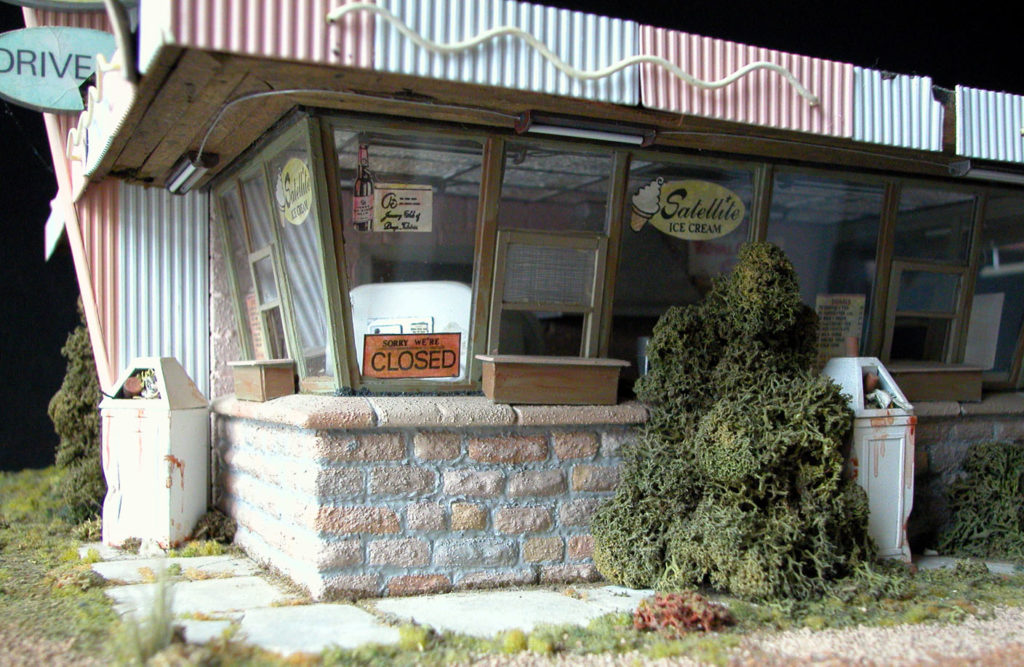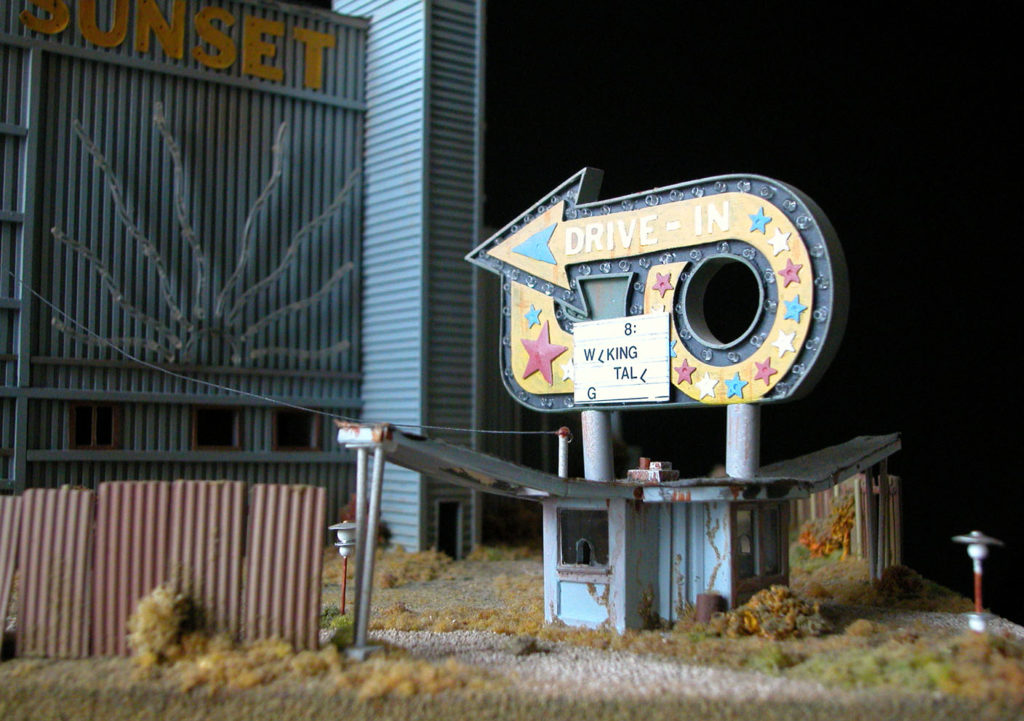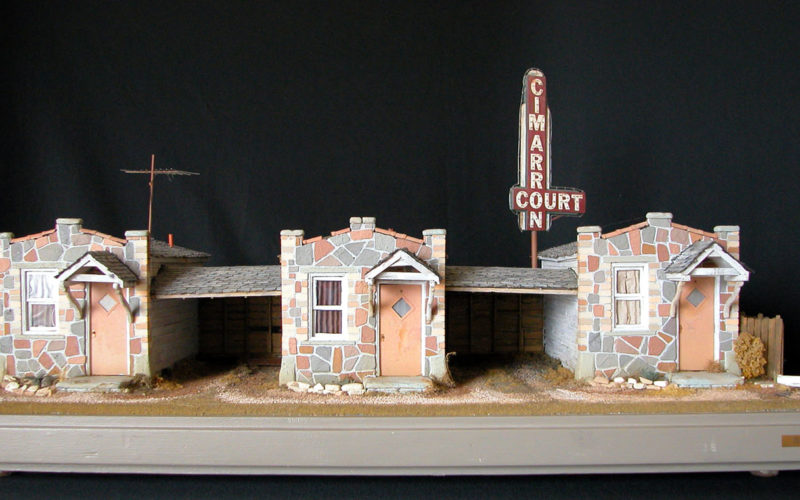BECCA MARTIN-BROWN
bmartin@nwaonline.com
Hot Springs artist David Malcolm Rose remembers driving the old highways back in the day when they brought tourists into small towns instead of skirting around them. As interstates became the favored routes, independent businesses in those communities were lost to national chains of fast-food restaurants and convenience stores.
But Rose didn’t want “The Lost Highway” to be forgotten, and he began to capture those fading dairy bars and gas stations in photographs. Over the years, those photos became the three-dimensional models now on exhibit at the Fort Smith Regional Art Museum. His dream when he started was an immersive “super-show” like the Pompeii exhibit he stumbled into in New York; his fondest wish now that he is 73 is that an entity like the museum will take over care of the whole collection.
From Woodstock, N.Y., Rose wandered his way to Arkansas after he got out of the military in 1971. Landing in Little Rock, he started his formal studies in art at the university there. One of his first lessons, he says, was that “at that time, abstract art held the throne. If you wanted to be taken seriously, you were not doing anything realistic. I was a closet realist.”
He also had to make a living, and his fascination with old buildings served him well. Little Rock — particularly the Quapaw Quarter — was filled with beautiful turn-of-the-20th-century houses that had been abandoned and allowed to fall into disrepair. As home buyers started to see the merit in those historic structures, Rose found himself with a constant source of work in restoration. Every once in awhile, he says, he sold a piece of his art, “but that kind of tore me up, because it took away from my end goal to have an immersive collection.”
Since then, he’s painted, sculpted and had his work shown at the American Institute of Architects, The National Building Museum, and with Louis Meisel in New York City. His pieces are in the collections of Bruce Springsteen, Susan Sarandon and Tim Robbins, and he’s started writing, completing four novels, two books of memoirs and a play. He might be proudest of that accomplishment, explaining that he is dyslexic.
“I always felt like I wanted to write, but I never had the courage to do it, because I spell everything wrong,” he says. “Spelling now is just the push of a button — and the whole world changed for me!”
The world changed for FSRAM a couple of years ago, when Rose contacted Executive Director Lou Meluso. Meluso and Gallery Manager Casey Seamans drove to Rose’s home outside of Hot Springs and “were astonished by his frozen-in-time miniatures, paintings, and ancillary elements,” says spokeswoman Suzie Meluso.
“Rose’s work is so different, and the exhibition is so complete, it would be a shame not to be on view,” she says. “These miniatures are so precise, our guests can’t help but be amazed.”
The exhibit, which FSRAM calls a retrospective of Rose’s work, includes photographs, drawings and objects such as the 1954 Multi Mixer that graced a malt shop and toys like the Atomic Truck, Meluso says.
As far as Rose’s wishes for the future, Meluso says “the Fort Smith Regional Art Museum would be honored to hold in its collection this amazing retrospective compilation. As of this writing, details are still being worked out.”
“As a baby boomer, that cross-country road trip was a rite of passage,” Rose says. “I tried to create a portrait of the people who made their living by the side of the road and tell the story of the end of an era.”
__
FAQ
David Malcolm Rose:
‘The Lost Highway’
WHEN — 11 a.m.-6 p.m. Tuesday-Saturday; 1-5 p.m. Sunday, through Jan. 30
WHERE — Fort Smith Regional Art Museum, 1601 Rogers Ave.
COST — Free
INFO — 784-2787 or fsram.org
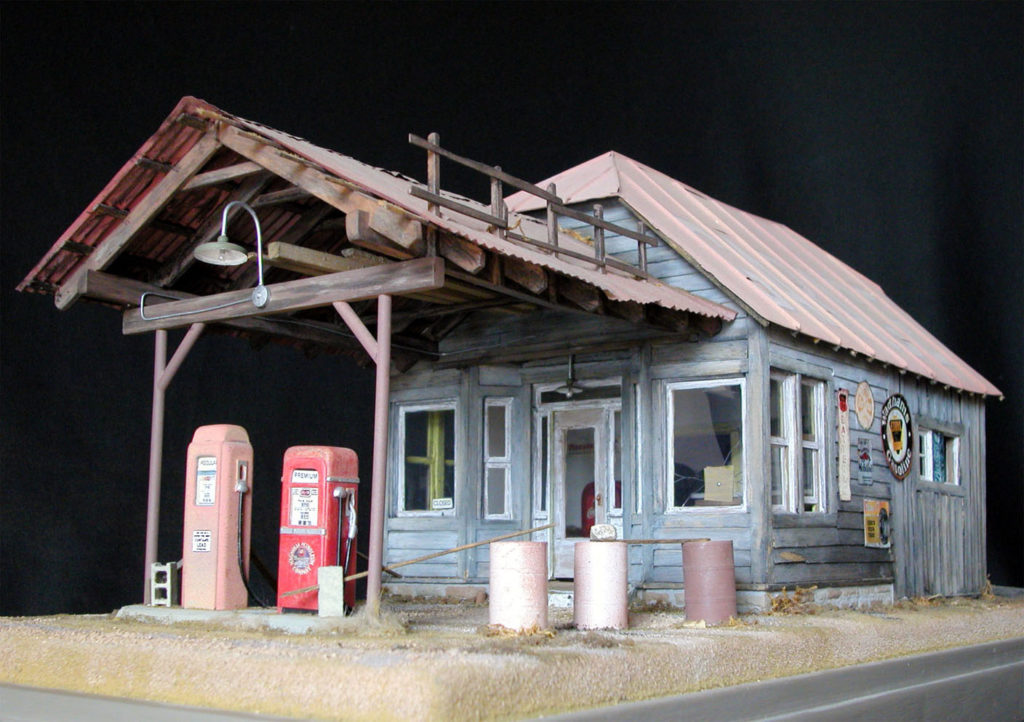
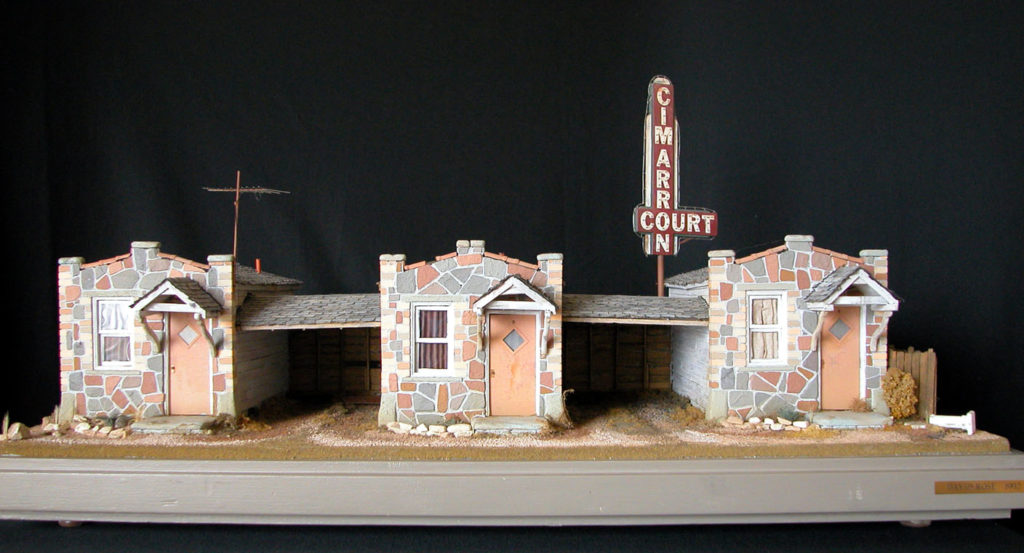
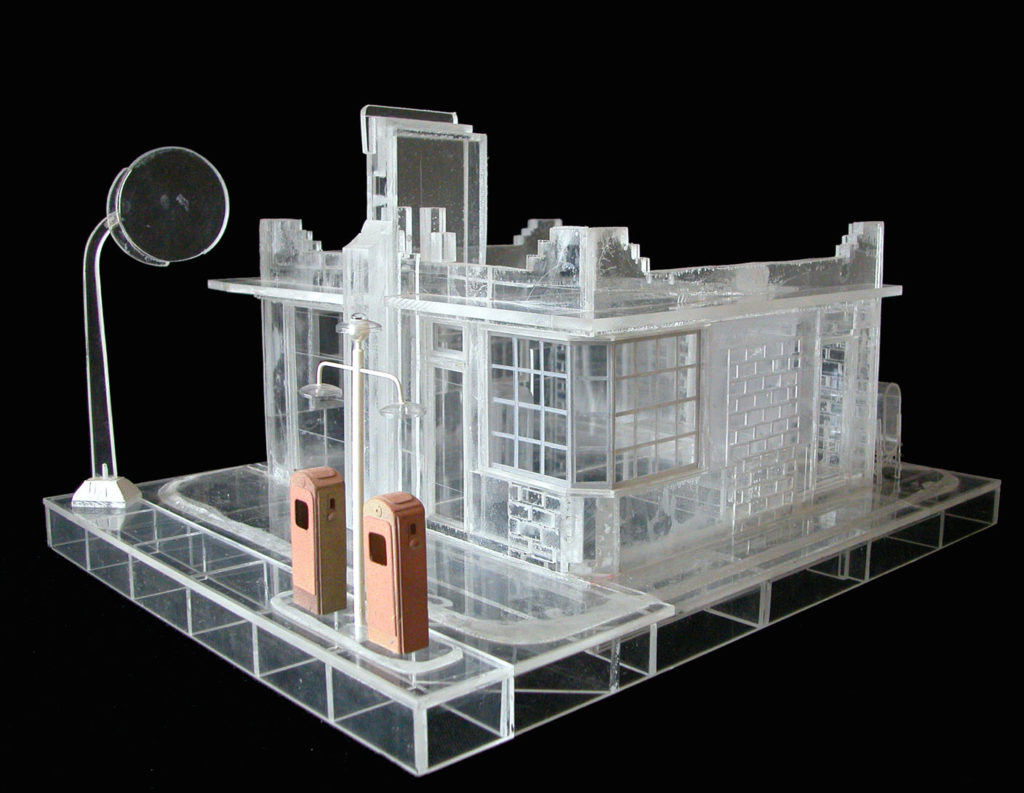
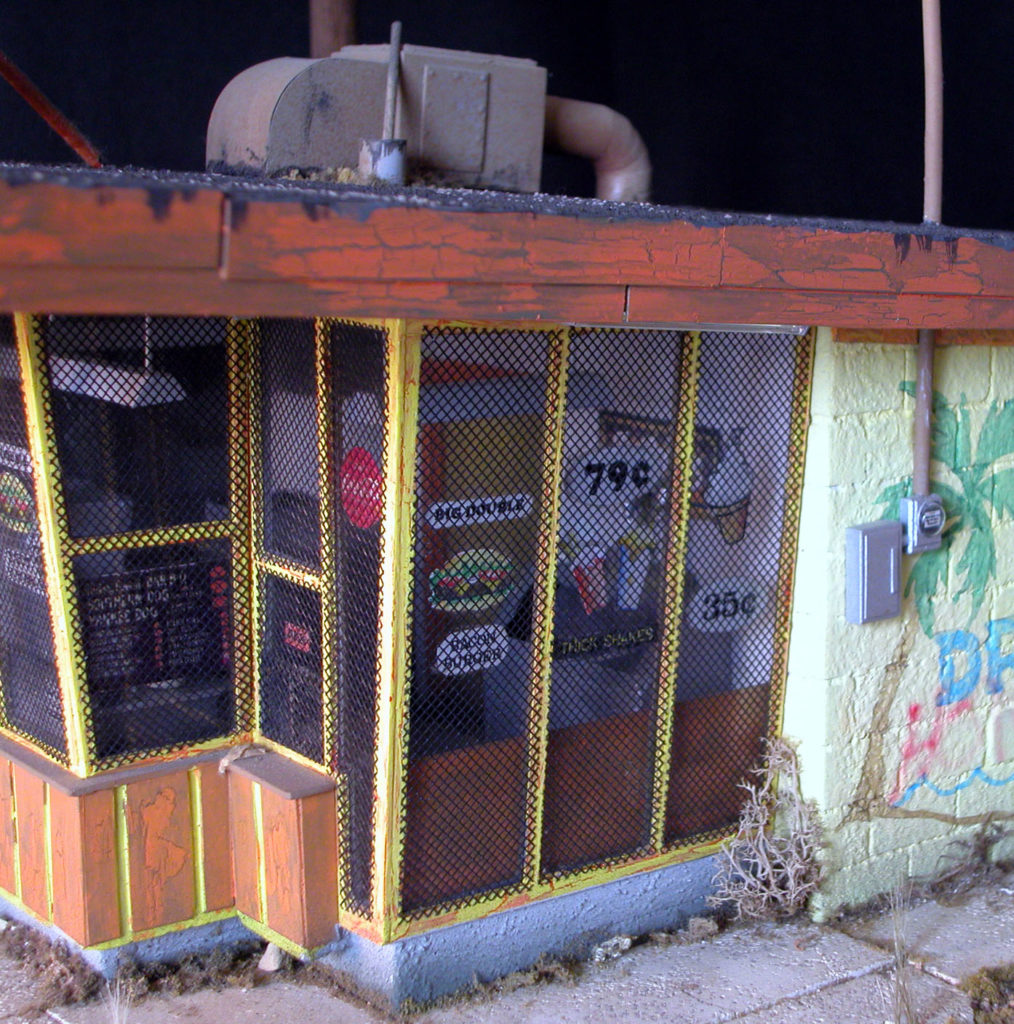
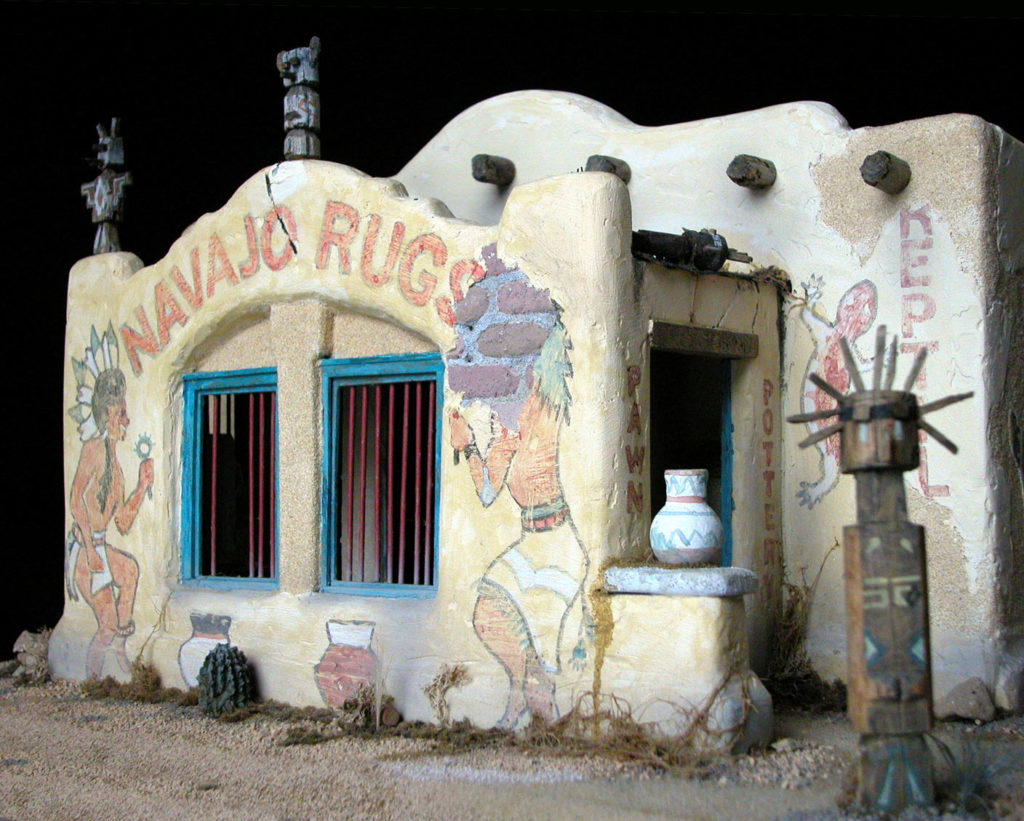
Rose’s “Lost Highway” series was born of traveling the United States just as interstates were taking over from two-lane byways. “As a baby boomer, that cross-country road trip was a rite of passage,” he says. “I tried to create a portrait of the people who made their living by the side of the road and tell the story of the end of an era.” (Courtesy Images/David Malcolm Rose) 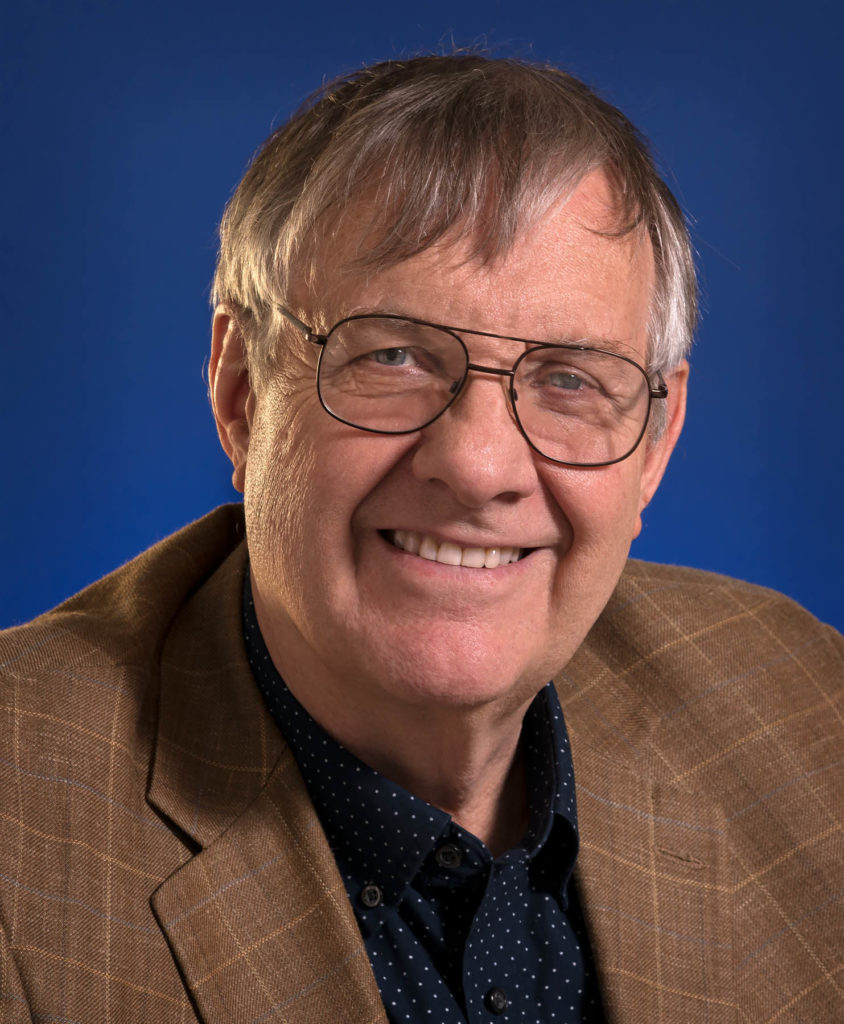
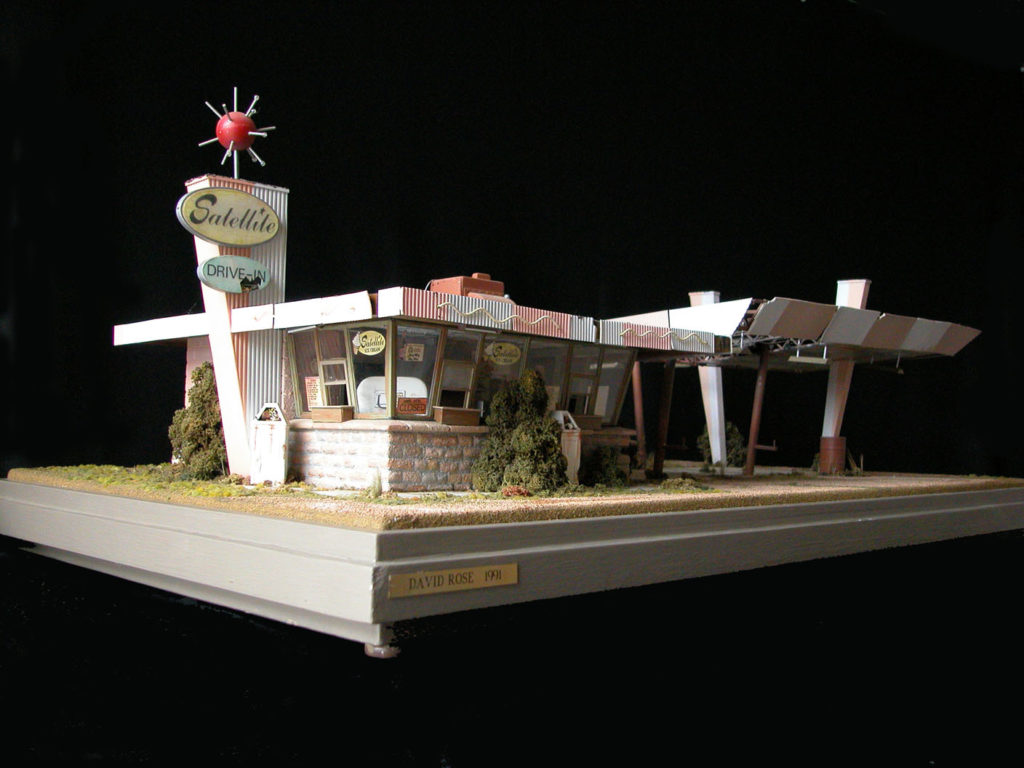
Artist David Malcolm Rose remembers the unique small-town businesses off the beaten path of the interstate in his sculpture series “The Lost Highway.” (Courtesy Image/David Malcolm Rose) 